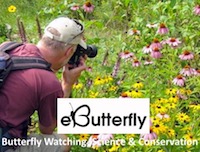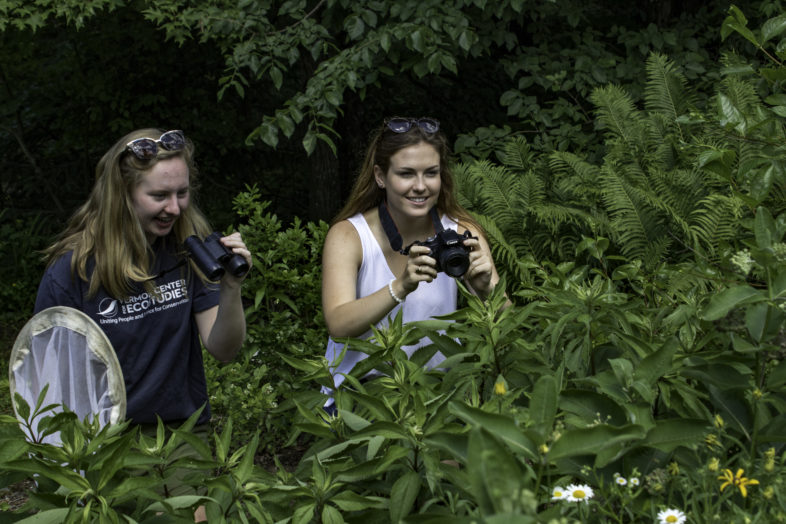Every time butterfly watchers raise binoculars and cameras to record a butterfly sighting, they collect important data. Recording the number, date, and location of each and every butterfly, no matter how common or rare, may seem trivial and repetitive— but this detailed information can be invaluable to science and conservation.That’s why we launched e-Butterfly and continue to steadily improve it.
 Building on a long tradition of butterfly watching among naturalists, e-Butterfly is a citizen science project that takes advantage of information technology to engage a massive network of observers to report butterfly sightings to a centralized database. Anyone, anytime, anywhere in North America (soon to be expanded to the Caribbean and Central America) can submit observations via the internet in the form of checklists. These data provide scientists, land managers, conservationists, naturalists, and students with data about butterfly distribution, abundance, and phenology.
Building on a long tradition of butterfly watching among naturalists, e-Butterfly is a citizen science project that takes advantage of information technology to engage a massive network of observers to report butterfly sightings to a centralized database. Anyone, anytime, anywhere in North America (soon to be expanded to the Caribbean and Central America) can submit observations via the internet in the form of checklists. These data provide scientists, land managers, conservationists, naturalists, and students with data about butterfly distribution, abundance, and phenology.
Opportunistic data collection programs like e-Butterfly allow volunteers to report species observations from anywhere, and can quickly assemble large volumes of both historic and current data. But how valuable is the data?
A new peer-reviewed study by researchers at the University of Ottawa used eButterfly data and a comparable dataset of professionally collected observations across Canada to measure the amount of new distributional and regional species richness information that opportunistic citizen science generates.
They found that e-Butterfly contributes new distributional information for a majority of the ~300 butterfly species they examined, and that volunteers submitting observations opportunistically detected species ~35 days earlier than professionals.
The study’s lead author Peter Soroye said, “Butterflies are generally considered well-studied across most of Canada, so to find that e-Butterfly was revealing new information for up to 80% of butterfly species across the country, and finding them up to a month ahead of when scientists usually see them, really speaks to the ability and power of e-Butterfly’s citizen science approach.”
While e-Butterfly wasn’t as good at predicting regional species richness on its own (detecting about 35‐57% of species per region), it significantly contributed to regional species richness when combined with the professional dataset, adding about 3 species per region that had gone undetected in professional surveys.
The authors concluded that opportunistic citizen science programs like e-Butterfly, in conjunction with professional datasets, provide unique information on species distributions and phenology which are important for understanding global change.
“I think one of the coolest things about this study is that we’re showing that regular people contributing to citizen science programs like eButterfly, from adults on the weekend to kids after school, can teach us a huge amount of new things about the world around us,” said Soroye. “And if you’re passionate about discovering more about the world and protecting nature, you don’t have to be a scientist to make a difference. Everyone can play a part, and it’s as easy as signing up for eButterfly!”


Nice article and great photo!
Nice article. I guess I should chase butterflies with more enthusiasm even the ones I have photos of.
Pa